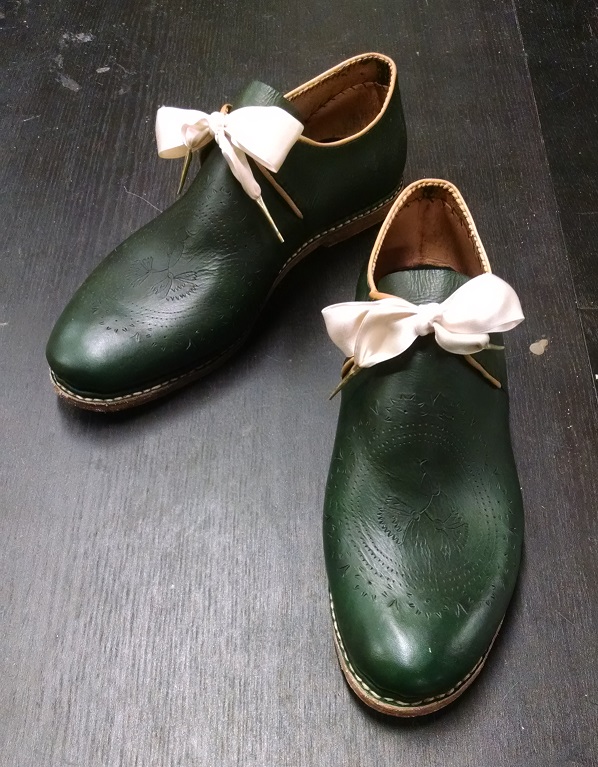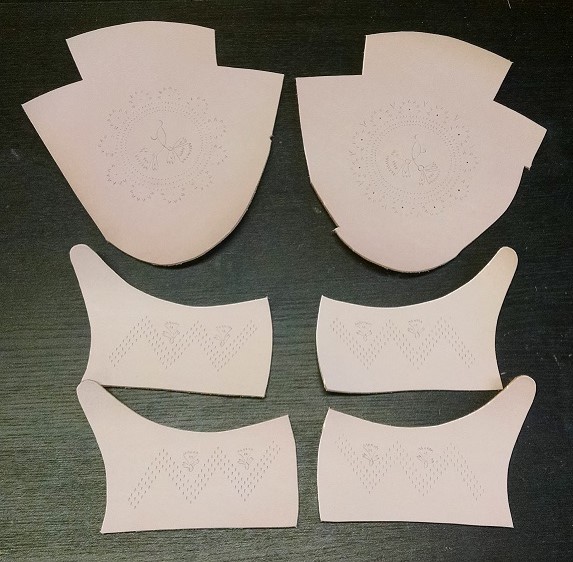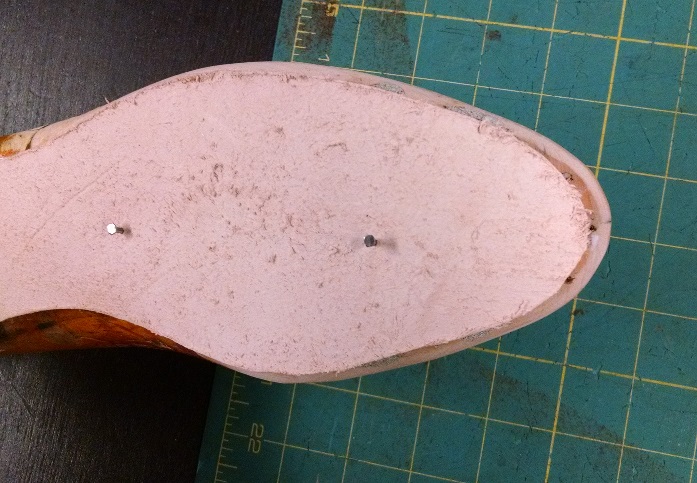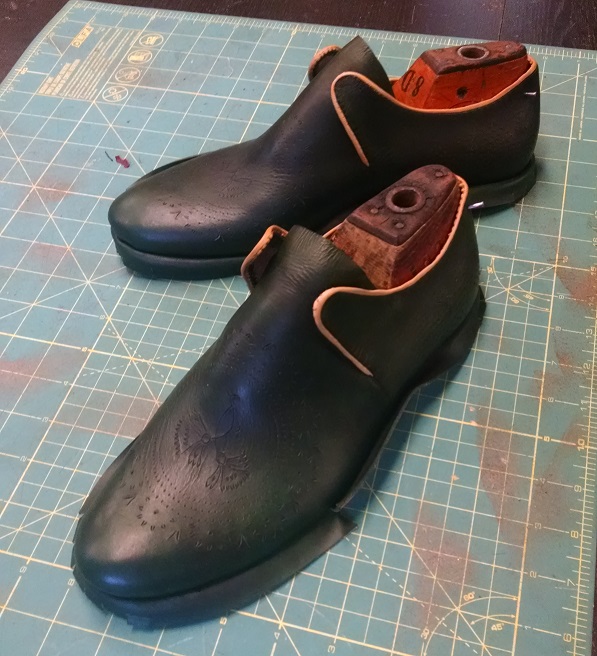A new pair of 1580s pumpes, dyed a forest green and bound along the opening with natural goat, which ends up looking a bit gold. Combine a pair of ivory laces, and you have a great looking pair of shoes – what I find particularly attractive about these shoes is the way that the welt and outsole “tuck in” under the upper. If you look at many (nearly all) of the extant and pictorial evidence, this is very typical. In later 16th century shoes, the toe even overhands the sole by a large amount, and in many cases, it is the same all around the outsole itself; so much so that the wearer is practically walking on the upper.
The toe definitely overhangs the outsole a bit, and the edge is tucked in underneath the upper a bit. Some of the shoes and pantofles are actually quite extreme – almost half an inch or so under the toe. The parts that makes this difficult is gathering all of the leather at the toe to tuck it under, but by no means is it impossible.
As always, starting with the cutting pattern. The decoration is based on some 16th century finds, created by the talented Mercina, for whom these shoes were tailored. It’s a combination of awl holes and tips of a knife pressed in, along with a simple scored floral design. It ought to also be mentioned that one my little quirks in making shoes is attempting to get as much out of the leather as possible. I think I did particularly well this time around, and re-assembled the jigsaw puzzle so that you could see.
The uppers were pinked prior to dyeing – this allows the dye to penetrate any deeper nicks. One of the things you will notice with a great deal of mid to late 16th century shoes is the level of subtle detail. Gone are the large slashes of the 1540s, giving way to small decorative elements and pinks and cuts.
As I mentioned, take a look at the insole – I’ve mentioned this before in other posts, but what you’ll notice about these lasts is that they have been filleted (i.e. sanded into a curve) and the insole has been made much smaller, almost by 3/8″ all the way around.
3 strand 16/1 was used to close, as I find this allows us to get a strong seam without deforming the material unduly. A straight awl was used to close, and I should note that the binding strip was applied before the shoe was closed, catching the start of the strip into the close. For binding and heel stiffener, I used a 2 strand 16/1. I find that the narrower thread, though still providing plenty of stability, allows finer work and looks nicer. The tongue was made a bit longer per request. One thing to note – though once applied, the heel stiffener was kind of “wonky” and one could see evidence of stitching through the back, but once tossed in the bucket and lasted, nearly all traces disappeared.
The ivory ribbons really set this pair off. For future late-period work, I’ll probably try to tuck the welt and heel in a bit more still. The lasts used for this, though modern, also have a better look than typical modern lasts. Tucking the treadsole under the shoe also really helps.




